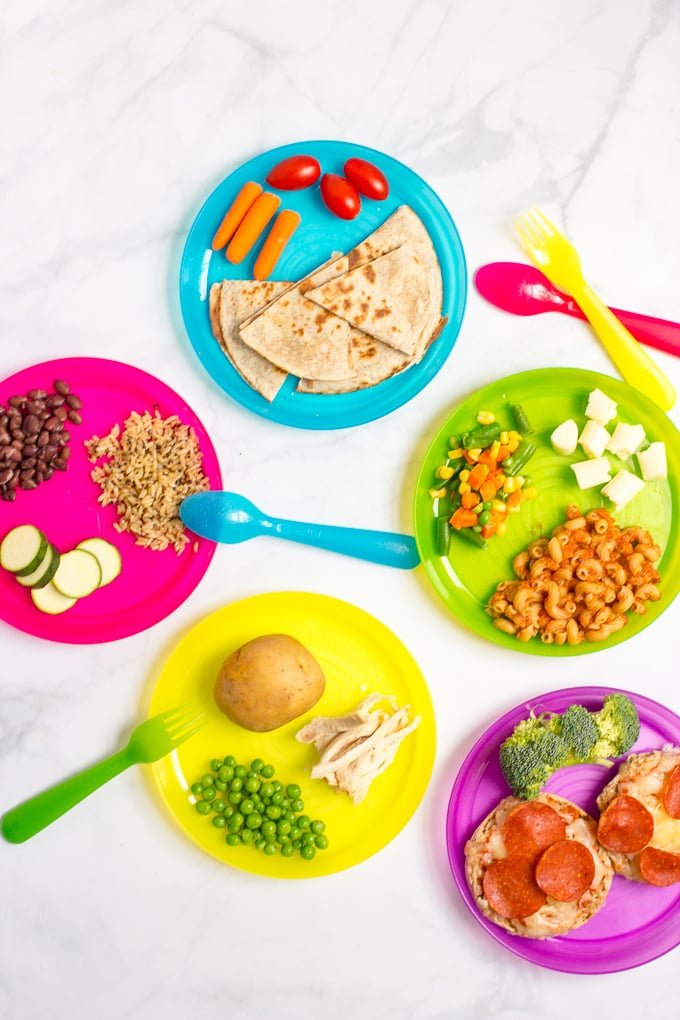The Kid’s Healthy Eating Plate is a visual guide designed to help children and their families make nutritious and balanced food choices. It offers a simplified version of the well-known Healthy Eating Plate, tailored to the nutritional needs and preferences of children. Developed by nutrition experts, the Kid’s Healthy Eating Plate emphasizes the importance of consuming a variety of nutrient-rich foods in appropriate portions. In this guide, we’ll explore the key components of the Kid’s Healthy Eating Plate and how it can promote healthy eating habits in children.
Visual Representation: The Kid’s Healthy Eating Plate is divided into sections that represent different food groups, making it easy for children to understand and apply. Each section is color-coded and labeled to correspond to specific food categories, providing a clear and engaging visual aid for parents, caregivers, and educators to use when teaching children about balanced nutrition.
Fruits and Vegetables: A significant portion of the Kid’s Healthy Eating Plate is dedicated to fruits and vegetables. These foods are rich in vitamins, minerals, antioxidants, and dietary fiber. Encouraging children to eat a variety of colorful fruits and vegetables can help support their growth, development, and overall health. It’s important to expose children to different types of produce, making eating a rainbow of colors a fun and educational experience.
Whole Grains: Whole grains occupy another portion of the plate. Foods such as whole wheat bread, brown rice, whole grain pasta, and oatmeal provide complex carbohydrates and dietary fiber, contributing to sustained energy levels and digestive health. Whole grains also contain essential nutrients that support children’s growth and cognitive function.
Protein Sources: Proteins are essential for children’s growth, development, and overall well-being. The Kid’s Healthy Eating Plate includes a section for protein sources such as lean meats, poultry, fish, eggs, beans, and nuts. Incorporating a variety of protein-rich foods ensures that children receive essential amino acids and nutrients for building strong muscles, bones, and tissues.
Healthy Fats: Healthy fats are important for children’s brain development and overall health. The Kid’s Healthy Eating Plate includes a small section for healthy fats such as avocados, nuts, seeds, and olive oil. These fats provide essential fatty acids that support cognitive function, along with promoting skin health and hormone balance.
Dairy or Dairy Alternatives: Dairy products or dairy alternatives are important sources of calcium and vitamin D, which are essential for building strong bones and teeth. The Kid’s Healthy Eating Plate includes a section for dairy or dairy alternatives such as milk, yogurt, and cheese. If opting for dairy-free alternatives, choose fortified options to ensure adequate nutrient intake.
Hydration: The Kid’s Healthy Eating Plate includes a separate section for a water glass or cup, emphasizing the importance of staying hydrated. Water is essential for various bodily functions, including digestion, circulation, temperature regulation, and cognitive function. Encouraging children to drink water throughout the day promotes good hydration habits.
Portion Control: The Kid’s Healthy Eating Plate also emphasizes portion control, teaching children about appropriate serving sizes for each food group. This awareness helps children develop a sense of satiety and prevents overeating, contributing to maintaining a healthy weight and preventing childhood obesity.
Educational Tool: The Kid’s Healthy Eating Plate serves as an educational tool that parents, caregivers, and educators can use to teach children about balanced nutrition. By involving children in meal planning, grocery shopping, and food preparation, parents can foster a positive relationship with food and encourage healthy eating habits from a young age.
Conclusion: The Kid’s Healthy Eating Plate offers a visual and practical approach to teaching children about nutritious food choices. By emphasizing the importance of consuming a variety of fruits, vegetables, whole grains, proteins, healthy fats, and dairy, this tool helps children understand the value of balanced nutrition. Parents and caregivers can use the Kid’s Healthy Eating Plate as a guide to promote healthy eating habits, encourage exploration of different foods, and set the foundation for a lifetime of well-being.


